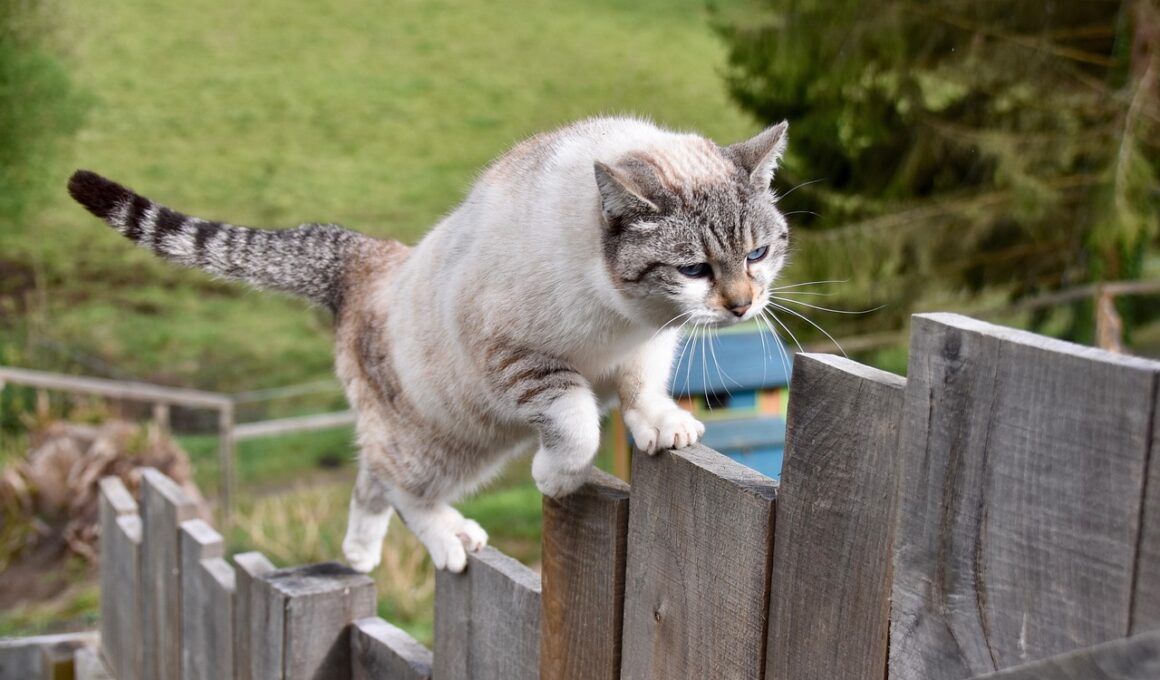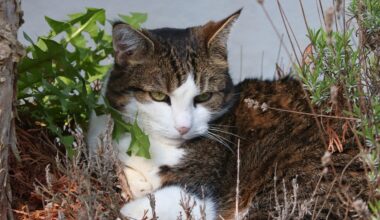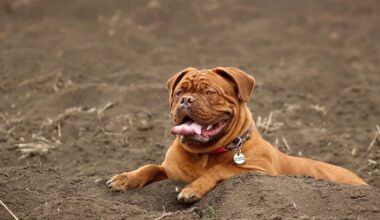Using Positive Reinforcement to Enhance Cat Agility Performance
Training your cat for agility sports can be a rewarding experience. However, traditional methods can lead to stress and resistance. Positive reinforcement helps create a fun and engaging environment. This method encourages your cat to participate willingly. It’s essential to understand what motivates your feline friend. Common treats can often work wonders, but the key is consistency. Reward your cat promptly after they exhibit the desired behavior. This helps them associate the action with a positive outcome. In agility, this could mean rewarding them when they successfully navigate an obstacle or follow a command. Instead of punishment, focus on fostering skills and building confidence. Observing your cat’s unique personality can guide you in choosing the right rewards. As cats are inherently curious, using toys or interactive elements as rewards can enhance motivation. Remember, the goal is to make training a positive experience for both you and your cat, which can significantly improve performance in agility sports. Positive reinforcement not only strengthens your cat’s abilities but also enhances your overall bond, leading to exceptional results in competitions or simply enjoying agility activities together.
Understanding Cat Behavior
To effectively use positive reinforcement in agility training, it’s crucial to understand cat behavior. Unlike dogs, cats have different social and behavioral patterns. They often operate on their own terms, so adapting your training approach is essential. Recognizing your cat’s body language will help you assess their comfort during training sessions. Signs of stress includes flattening ears or a twitching tail. If your cat exhibits these behaviors, take a step back. Allow them some time to regain their composure. Training sessions should always be short and enjoyable. Aim for about five to ten minutes of practice. This keeps your cat’s attention and prevents boredom. Use high-value treats or toys during these sessions to maintain interest. Creating a structured routine can also help your cat know what to expect. Consistency with training leads to better outcomes. Additionally, incorporating fun games and play helps stimulate your cat’s natural instincts. This enhances their agility and overall responsiveness to commands. As your cat grows comfortable with agility training, you’ll notice improvements in their focus and performance. Building this understanding ultimately leads to a successful partnership in the agility arena.
When integrating positive reinforcement into cat agility training, establishing clear commands is essential. Clarity allows your cat to understand what is expected. Start with basic commands, such as ‘jump’ or ‘come.’ Consistency is key; use the same word for particular actions each time. Combine verbal commands with hand signals for greater effectiveness. Cats often respond well to visual cues, so use gestures that sync with your verbal cues. This helps your cat make stronger associations between the command and the desired behavior. During training, break down complex obstacles into manageable steps. This approach makes learning less intimidating and encourages your cat to engage more. As your cat masters each step, consistently reward them with praise or treats. Celebrate their successes, even if small, and encourage them to try again if they stumble. Patience is vital in this process; over time, your cat will grow in confidence and agility. Create a positive atmosphere by remaining upbeat and encouraging, reinforcing the positive associations they make with agility tasks. As your cat improves, gradually introduce more challenging tasks to keep their interest piqued, fostering ongoing skill development and engagement.
Incorporating Variety Into Training
Variety is another essential component of effective positive reinforcement training for agility. Cats can become bored quickly if training sessions remain monotonous. Incorporate different obstacles, commands, and rewards to keep their focus and motivation high. For instance, use various jumps, tunnels, and weave poles to offer diverse challenges. Regularly changing the layout of your training space can also stimulate your cat’s interest. Adding new toys or extract different rewards to engage them at each session can create excitement. Cats thrive on novelty, and providing fresh experiences can accelerate their learning. Furthermore, vary your training locations. Taking your cat outside can add a different dynamic, making training feel like an adventure. Remember, agility training is not solely about improvement but also about enjoyment. Make an effort to balance practice with play, ensuring each session has an element of fun. Positive reinforcement combined with variety can lead to improved skills and a happy cat eager to participate. By maintaining a spirited atmosphere during training, you’ll cultivate a lifelong love for agility sports in your feline companion.
As your cat develops agility skills, monitoring their progress becomes increasingly important. Keep track of their achievements and also areas that need improvement. Maintaining a training log can help you observe patterns over time. Note down what commands or obstacles excite your cat most. This documentation aids in crafting training sessions that align with their interests. Additionally, celebrating milestones plays a pivotal role in motivation. Whether it’s a perfect jump or completing a challenging course, recognizing these moments encourages continued effort. Provide ample resources, such as informative books or videos, to enhance your understanding of agility training techniques. Engaging with fellow cat trainers can be rewarding, creating community support for your journey. Sharing experiences and learning new strategies can enhance your training approach. Consider online forums or local training clubs where you can exchange tips and insights. Remember that flexibility is key throughout this process. Each cat learns at their own pace, and adapting your training strategy ensures lasting success. Continuous improvement and adaptation lead to a successful partnership in agility training, driven by positive reinforcement principles guiding your efforts.
Staying Patient and Positive
Throughout the journey of training your cat for agility sports, patience and positive vibes are your best allies. Cat training won’t always go as planned, and setbacks can happen. In these moments, it’s crucial to remain calm and composed, as cats can pick up on your emotions. If your cat shows disinterest or frustration, take a break. Often, a brief pause can alleviate stress and rekindle motivation. Keep in mind that your cat is engaging in this training with you; they want to have fun just as much as you want them to succeed. Avoid allowing discouragement to take root; instead, focus on celebrating small wins, which can propel both of you forward. Surround yourself with positive affirmations to encourage a motivating environment. This atmosphere benefits not only your cat but also your training sessions. Encourage friends and family to cheer on your feline partner during practice, further boosting their enthusiasm. Creating shared experiences can foster a bond that enhances performance in agility sports. Ultimately, patience, positivity, and fun lead to enjoyable training sessions and exceptional performances for you and your agile feline.
Finally, after successfully training your cat in agility, consider showcasing their skills, as it solidifies your hard work. An agility trial or exhibition offers a fantastic platform for cats to demonstrate their prowess. This event not only allows you to celebrate your cat’s abilities but also fosters community interaction with fellow enthusiasts. Sharing your journey through social media or local cat training clubs can inspire other cat owners. Positive reinforcement should remain at the forefront of your training philosophy, even in competitions. Remember to keep the atmosphere relaxed and enjoyable. Let your cat approach the competition as a game rather than a high-pressure situation. The joy of performing can elevate their confidence and effectiveness, amplifying their agility abilities. Be prepared to encounter various challenges during competitions, which lends even greater credibility to your training. In addition to physical skills, maintaining mental preparedness is crucial. Adaptation and resilience are keys in both training and competition settings. Celebrate every accomplishment, from small victories to grand performances, reinforcing the bond between you and your agile companion. Cherish the memories created in this journey to create a lasting partnership in the world of agility sports.
This is another paragraph with exactly 190 words…


